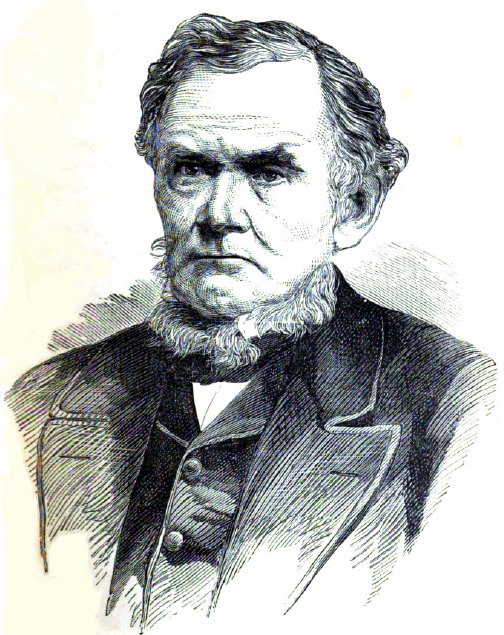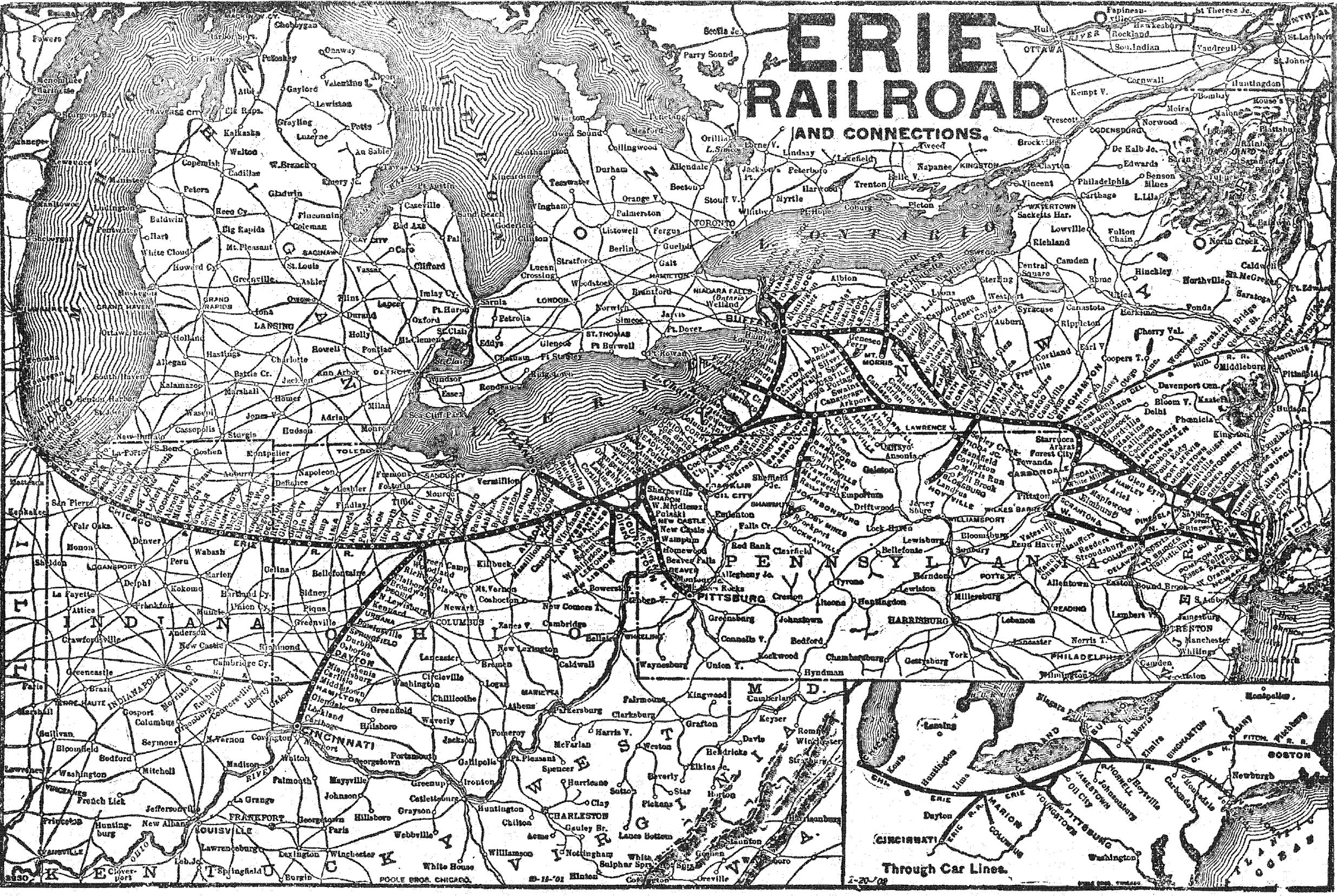- Home ›
- Tycoons ›
- Daniel Drew
Daniel Drew: Businessman, Erie Railroad, Net Worth
Last revised: July 25, 2024
By: Adam Burns
Daniel Drew was an American businessman and financier who was known for his unethical trading practices.
Born in 1797, he made his fortune in the steamship and railroad industries during the mid-19th century. Drew was notorious for manipulating the stock market, particularly stocks of the Erie Railroad, often causing financial ruin for his competitors.
His unscrupulous tactics led to several financial crises, including the Panic of 1873. Despite his initial success, Drew eventually lost his fortune and died in poverty in 1879.
Background
Daniel Drew is a good example of why the general public came to despise many railroad tycoons for their ruthless nature. He also a good example of how speculating on railroads during the 19th century could make one just as poor and bankrupt as it could wealthy.
Drew was not a successful railroad manager like James Hill or Edward Harriman and made his money by mostly speculating on stocks and is perhaps most famous for being involved with Cornelius Vanderbilt for control of the Erie Railroad (during the famed "Erie War").
Once a successful business owner and multimillionaire he was betrayed by Jay Gould and Jim Fisk after all three had won control of the Erie from Vanderbilt. Losing millions, he later lost even more money in the financial panic of 1873 and died rather poor.
At A Glance
Gilbert Drew (father) Catherine Muckleworth (mother) |
|
The Erie would go by several names during its corporate life, from the original New York & Erie Rail Road of 1832 to the New York, Lake Erie & Western of 1878. It became the "Erie Railroad" once again in 1938 following the company's final bankruptcy.
The system suffered immensely at the hands of speculators like Drew, Gould, Fisk and others which only used it as a means of enriching themselves. As a result, it was plagued with debt and deficits to which the railroad never truly escaped even after its 1960 merger the Delaware, Lackawanna & Western that formed the Erie-Lackawanna Railway.
Early Life
Drew was born in Carmel, New York on July 29, 1797 the son of a farmer. Drew was never well educated, so much so that he was nearly illiterate for his entire life.
His initial years were filled with hardship which saw him work hard labor in farms and factories. He intended to work for his father. However, his Dad passed away when he was only 15 and after a short stint in the War of 1812. Drew's foray into entrepreneurship began with cattle driving, which ultimately led to his role as financier, speculator, and railway magnate.
Drew was not born into wealth, but he built an empire through acumen and ruthlessness. He married his wife, Roxanna Mead, in 1823, and the pair had two children together. Roxanna played a supportive role in Drew's worldly ambitions, often acting as a grounding force in his high-risk speculations.
Moving on to steamboat business, Drew primarily worked the Hudson River, although he would expand operations onto Lake Champlain. During this time he competed head-to-head with Cornelius Vanderbilt, undercutting the "Commodore" as often as possible.
While these efforts severely drove down fare prices, and his own profits, it proved successful in luring passengers to his boats. After achieving success in this industry, Drew turned his gaze to the railroads.
Business Interests
In 1844 he tried to make it big on Wall Street starting his own brokerage firm Drew, Robinson & Company. While fairly successful Drew became notorious as a shrewd stock manipulator and was not well liked by many on Wall Street.
His firm operated until 1853 when he became involved with the Erie Railroad and forced his way in as director by 1857 after the financial panic that occurred that year.
The Erie Railroad had its beginnings dating all of the way back to 1832, when it was organized that year by the Governor of New York, De Witt Clinton as the New York & Erie Railroad to build a rail line in the southern part of the state linking Piermont, New York with Dunkirk on Lake Erie.
It was finally able to complete this main line by 1851. Over the years it acquired, leased, or built new lines and by the late 19th century it had reached points such as Buffalo, Rochester, Chicago, Cincinnati, and Indianapolis.
Erie Railroad
As head of the Erie at the time Drew earned a substantial profit by speculating on and manipulating the company's stock. Between 1866 and 1868 he partnered with Jay Gould and James Fisk to prevent Cornelius Vanderbilt from taking control of the Erie.
During the mid-19th century the Erie was one of the nation's most successful systems. What began as an argument between Vanderbilt and Gould turned into a battle of wills as "Commodore" attempted to corner Erie's stock.
Drew, Gould, and Fisk soon became embroiled in a struggle for control over the Erie Railway in an event known as the "Erie War." In response, Gould and his associates artificially inflated the Erie's stock value in a move known as "watered stock."
This war of financial attrition involved ruthless stock manipulation, dirty tactics, and legal battles. At one point, amidst the tumult, Drew, Gould, and Fisk even managed to change legislation in their favor, prompting an investigation by the state of New York. Nevertheless, their efforts defeated Vanderbilt and the trio acquired control of the Erie.
Downfall
Despite Drew's clever maneuvering, he was outmaneuvered by his younger counterparts. In 1868, Jay Gould and James Fisk took over the Erie Railway, leaving Drew on the losing side. Drew had attempted to short the stock, but Gould and Fisk inflated the market with fraudulent shares, leading to a loss estimated at $1.5 million for Drew.
This loss marked the beginning of the end of Drew's financial empire. After the Erie War, Drew suffered continuous financial setbacks due to his aggressive speculative tactics and fluctuating market conditions. Despite attempts to revitalize his wealth through various other investments, these endeavors met with little success.
The timing of this incident essentially ruined Drew. Three years later the financial panic of 1873 occurred and forced him into bankruptcy with no significant assets or means of income he was destitute.
Legacy
Drew had few supporters or sympathizers, however, for his financial troubles given his shady practice of speculating on and manipulating of stocks. As a result he had little places to turn for help within the industry.
At the peak of his financial fortune it is estimated Drew's net worth was in the range of $13 million; truly amazing considering what later transpired.
During his final years, Drew was declared insolvent, a stark contrast to his once lofty financial status. Former associates Jay Gould and James Fisk, despite their previous enmity, extended help to Drew during his bankruptcy. However, Drew's pride prevented him from accepting their assistance.
Daniel Drew died on September 18, 1879, in poverty. From being a formidable tycoon, he had come to a destitute end, a consequence of his high-risk speculations. Despite his grim end, he left behind an indelible mark in the realm of finance and railroads, setting precedents, albeit controversial, for future speculators and entrepreneurs.
Drew's story echoes the cyclical nature of economic fortunes and the potentially devastating consequences of unmoderated risk-taking. His life and career serve as a lesson in venture capitalism, corporate governance, and financial regulation; topics that continue to be explored in modern economic studies.
In retrospect, Daniel Drew was a man of ambition and resilience. His early hardships did not deter him from striving for success, and his entrepreneurial spirit saw him rise from a poor orphan to a business magnate.
Despite his fall, his contributions to the railroads, especially the Erie Railway, stand as testament to his boldness and business acumen. Despite his poor business reputation, Drew did consider himself a devote Methodist and gave hundreds of thousands of dollars to the church, most notably giving $250,000 to found the Drew Theological Seminary.
Recent Articles
-
Oregon Railroad Museums: A Complete Guide
Apr 25, 25 03:11 PM
With its rich tapestry of scenic landscapes and profound historical significance, Oregon possesses several railroad museums that offer insights into the state’s transportation heritage. -
North Carolina Railroad Museums: A Complete Guide
Apr 25, 25 02:56 PM
Today, several museums in North Caorlina preserve its illustrious past, offering visitors a glimpse into the world of railroads with artifacts, model trains, and historic locomotives. -
New Jersey Railroad Museums: A Complete Guide
Apr 25, 25 11:48 AM
New Jersey offers a fascinating glimpse into its railroad legacy through its well-preserved museums found throughout the state.



